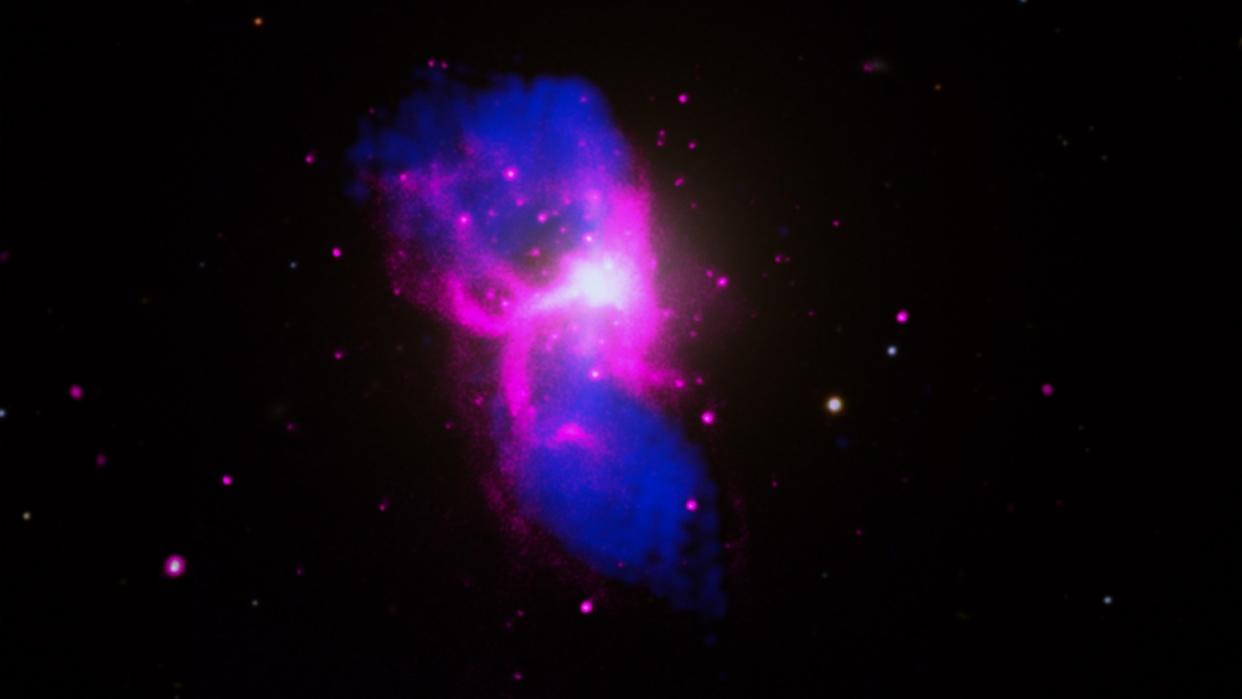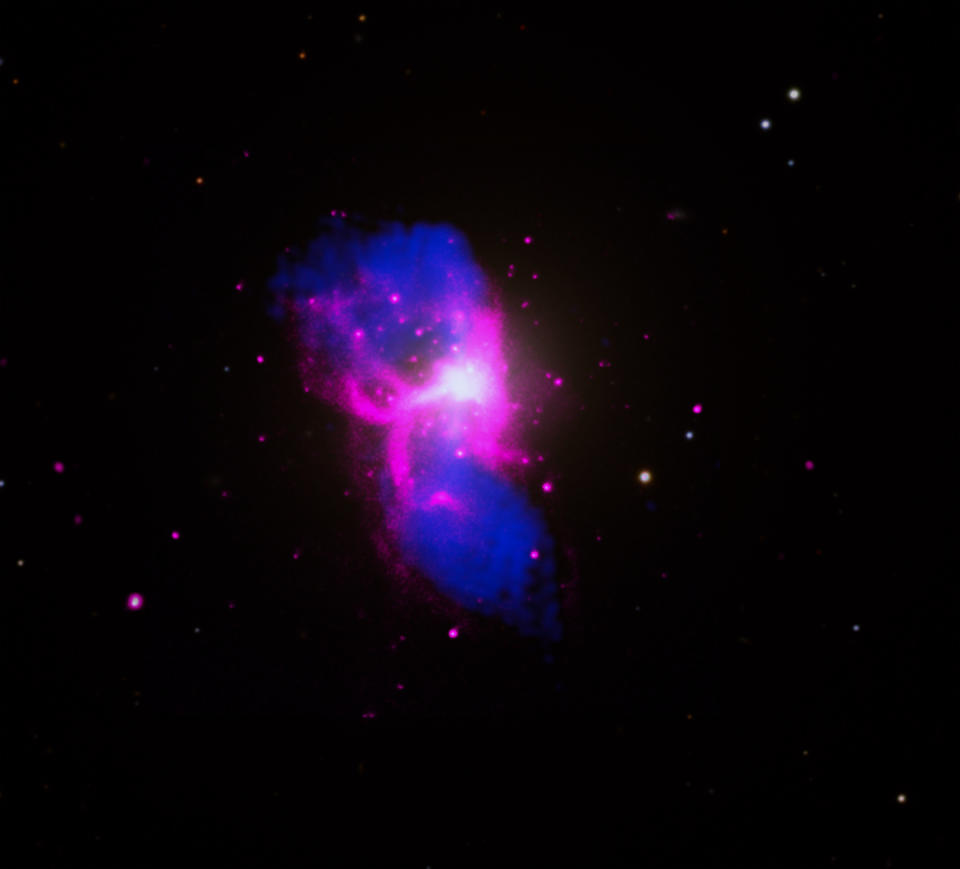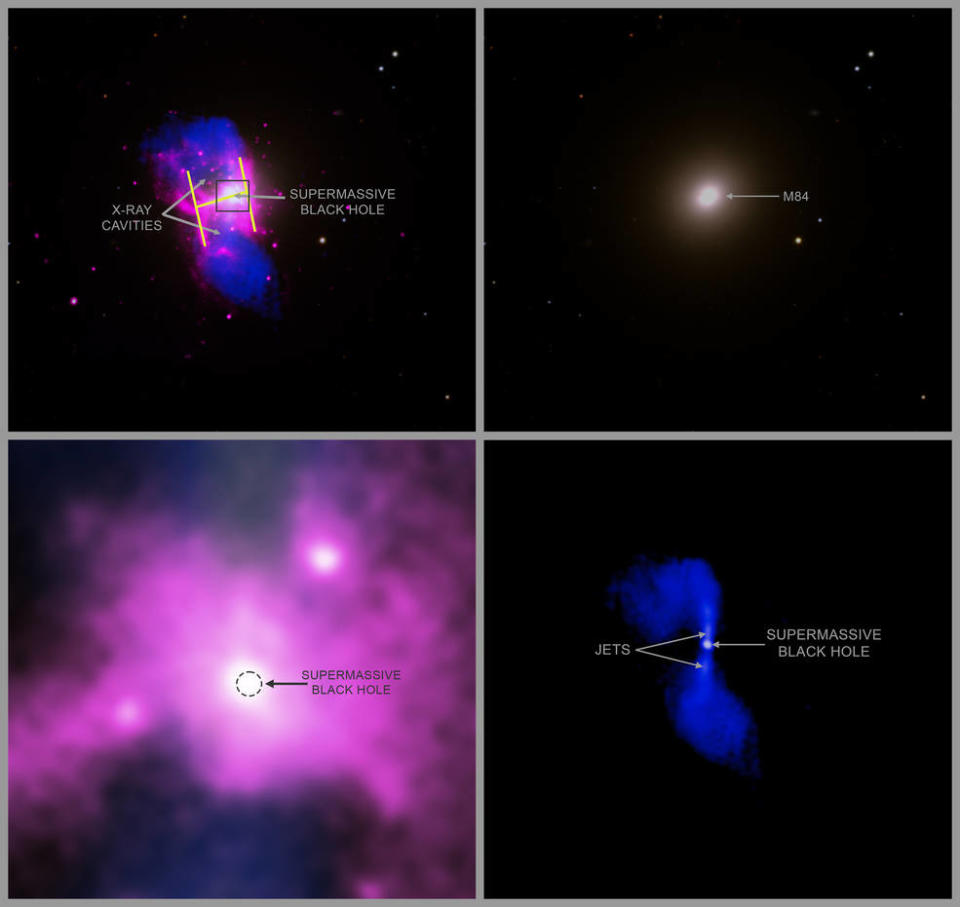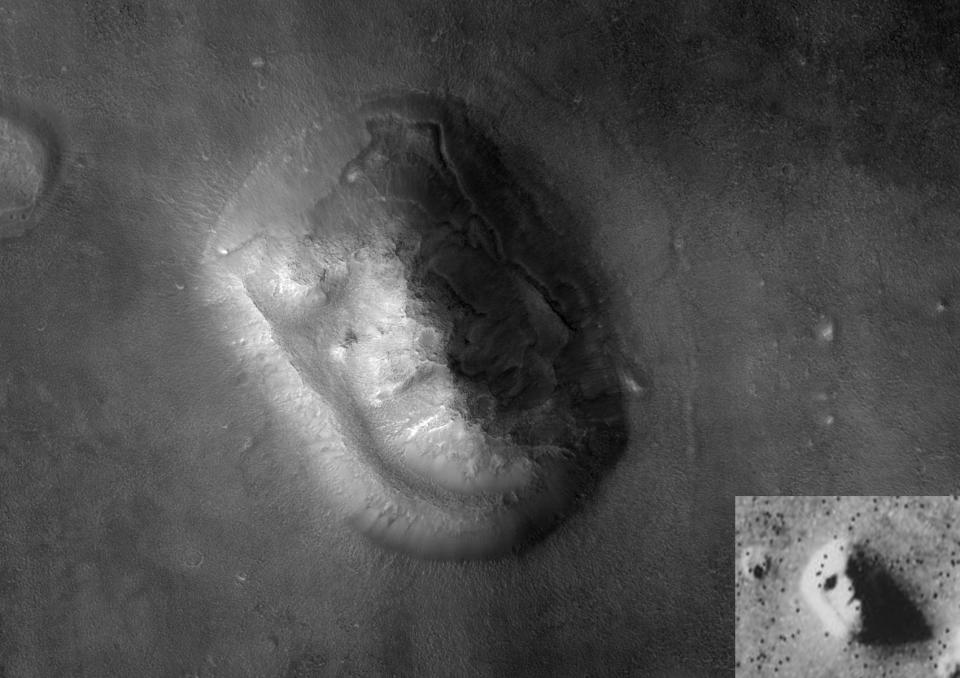Monster black hole burps out hot gas in bright 'H' shape (photos)


A hot pink letter "H" is carved into the blazing hot gas that surrounds a supermassive black hole that lurks at the heart of a massive galaxy. The structure is a staggering 40,000 light-years tall, making it about half the width of our entire galaxy, the Milky Way.
The "H" was revealed in an X-ray image of gas that surrounds the black hole in the elliptical galaxy Messier 84 (M84), located around 60 million light-years from Earth in the constellation Virgo.
But there is more than aesthetic value to this inarguably stunning image. The observations of M84, taken by NASA's Chandra X-ray Observatory and the Karl G. Jansky Very Large Array (VLA) show that the jets may have an influence in shifting gas away from the black hole and disrupting its feeding, acting in opposition to the gravitational influence of the supermassive object. This has given astronomers the impression some black holes are picky eaters, as the jets blasted out from black holes like this one seem to restrict the amount of gas they can feed on from certain directions.
Related: Black holes: Everything you need to know
The gas in the image is captured by the gravitational influence of the supermassive black hole. While some of this material will fall to the surface of the black hole, which has a mass equivalent to around 1.5 billion times that of the sun, some will be blasted away as jets of particles. These jets can clear cavities in the hot gas surrounding the black hole.
These cavities can be seen in the Chandra image creating the "H" shape as a result of the jets' orientation to Earth. The hot gas represented by hot pink in the image extends around 100 light-years away from the black hole and the fact it radiates at temperatures of tens of millions of degrees means it is most prominent in X-rays making it visible to Chandra.
In addition to the X-ray data collected by Chandra, the image also features radio wavelength data that was gathered by the VLA, a centimeter-wavelength radio astronomy observatory in the southwestern United States. The VLA data is seen in blue and shows the jets racing away from the black hole.

Astronomers estimated that each year the matter falling towards the supermassive black hole from its north along the jet has a mass around 500 times that of Earth. While that sounds like a tremendous amount of matter, it is only 25% of the mass of matter being fed to the black hole from directions in which the jet is not orientated, such as its east and west.
That implies that the cavities created by the jets as they blast outwards from the black hole's north and south are lifting away material and are thus slowing the rate at which it is falling to the black hole.
To test this idea, the team behind this observation applied a model of feeding black hole that assumes all matter within a certain distance of a greedy cosmic titan falls to its spherical surface at the same rate. In this Bondi model, created by and named after scientist Hermann Bondi, matter at equal distances from the black hole is affected equally by its gravity and should therefore accrete at the same rate around a black hole.
The astronomers found that the feeding of the supermassive black hole at the heart of M84 doesn't match the Bondi model, as matter isn't falling in, or accreting, equally in all directions, but instead forms the 'H' shape seen in Chandra's images.
RELATED STORIES:
— Hubble telescope hunts for a black hole among a brilliant field of stars (photo)
— Hungry black hole shoots out bright X-ray jet 60,000 times hotter than the sun
— Hubble Space Telescope reveals a rare black hole lurking in our cosmic backyard (video)
Of course, the titanic "H" structure seen in the Chandra image of M84 isn't the result of a black hole attempting to engage in some cosmic skywriting. Rather it is an example of pareidolia, a psychological phenomenon that sees our brains make coherent pictures or images from random data. Pareidolia can result in humans seeing animals in clouds, or in some extreme examples sighting the faces of deities or celebrities on toast.

One famous astronomical example of pareidolia was the so-called "Face on Mars." When NASA's Viking 1 spacecraft was snapping images of Mars in 1976 it spotted what appeared to be the shadowy likeness of a human face, two miles in length and located in a region called Cydonia.
The team's research was published in the journal The Monthly Notices of the Royal Astronomical Society and is available on the paper repository ArVix.

